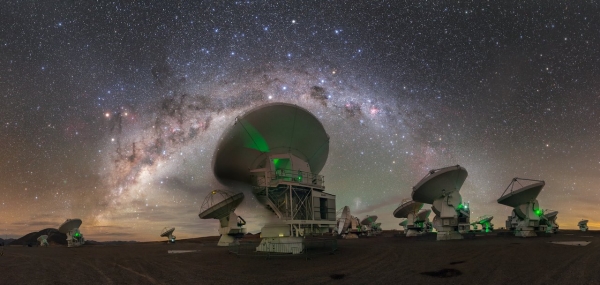ALMA is releasing data acquired as part of the Extension and Optimisation of Capabilities effort (EOC). These data were taken as part of the High-Frequency Long-Baseline Campaign (HF-LBC-2021) during Cycle 7, which was organised to test the calibration and imaging capability of ALMA at high-frequencies (397 - 908 GHz, Band 8-10) and using long baselines (~16 km). One main priority was to make a final validation of the band-to-band (B2B) phase referencing observation mode in Bands 8, 9, and 10. This technique allows the calibration of high-frequency observations by using a phase calibrator observed at a lower frequency, e.g. pairing Band 10 target observations with a Band 7 phase calibrator. The campaign conducted validation tests observing a complex structure (non-point-source) target source, R Lep, a carbon-rich evolved star in Bands 8, 9, and 10. Details of the campaign is detailed by Asaki et al (2023 Aug ApJ accepted). The successful campaign helped lead to the opening of Bands 8-10 long-baselines during Cycle 9. R Lep in Bands 8, 9, and 10 are available for download.
Release of Band-to-Band High-Frequency Long-Baseline ALMA Test Data Taken in 2021
Published: 02 Oct 2023

The released data consists of:
- Band 8 continuum only observations of the carbon-rich evolved star R Lep. One single pointing execution block was taken. The data includes 4 spectral windows (2 TDM and 2 FDM) with the total bandwidth of ~7.2 GHz. R Lep was observed at the center frequency of 405 GHz together with the phase calibrator in Band 4 (135 GHz). The switching cycle time was ~50 s. B2B phase transfer was used to test the accuracy in imaging the photosphere surrounded with the mass-loss dust with the angular resolution of 13 mas. The dataset also includes the self-calibrated image with the same angular resolution.
- Band 9 continuum only observations of the carbon-rich evolved star R Lep. One single pointing execution block was taken. The data includes 8 FDM spectral windows using 90 deg Walsh switching sideband separation with the total bandwidth of ~15 GHz. R Lep was observed at the center frequency of 667 GHz together with the phase calibrator at Band 4 (154 GHz). The switching cycle time was ~50 s. B2B phase transfer was used to test the accuracy in imaging the photosphere surrounded with the mass-loss dust with the angular resolution of 7 mas. The dataset also includes the self-calibrated image with the rather degraded angular resolution of 10 mas, caused by flagging solutions on the long baselines that had insufficient S/N for self-calibration.
- Band 10 continuum and spectral line observations of the carbon-rich evolved star R Lep. One single pointing execution block was taken. The data includes 8 FDM spectral windows using 90 deg Walsh switching sideband separation with the total bandwidth of ~15 GHz. R Lep was observed at the center frequency of 896 GHz together with the phase calibrator at Band 7 (305 GHz). The switching cycle time was ~50 s. B2B phase transfer was used to test the accuracy in imaging the photosphere surrounded by the mass-loss dust and HCN masing gas (at 890.8 GHz, from the J = 10 − 9 transition between the (11^1 0) and (04^0 0) vibrationally excited states) with the angular resolution of ~5 mas. The dataset also includes the self-calibrated images of the continuum source using the continuum emission; and the continuum image and HCN maser cube using the brightest HCN maser channel at the LSRK velocity of 9.4 km/s. The angular resolution of the continuum image made self-calibrated using the continuum data has a notably degraded angular resolution of ~18 mas, caused by flagged solutions on the long baselines that had insufficient S/N for self-calibration. Images that used the self-calibration solutions made using the HCN maser brightest channel did not lose angular resolution as all the S/N was very high.
